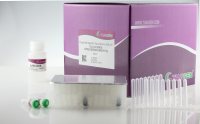DNA Separation Mechanisms During Electrophoresis
互联网
455
This chapter describes the separation mechanisms used for DNA electrophoresis. The focus is on the concepts that may help the researcher understand the methodology, read the theoretical literature, analyze experimental data, identify the relevant separation regimes, and/or design optimization strategies. But first, let’s look at some key definitions. Since capillary electrophoresis (CE) is a “finish line” technique, the mobility μ(M) and the velocity v(M) of a molecule of size M (in bases or base pairs) in an electric field E are generally defined as: μ(M)= [v(M)]/E = L/[t(M)E] in which, L is the distance migrated during the elution time t(M). Clearly, this definition is valid only if v(M) is constant during the run. This requires time-independent and uniform (i.e., along the capillary) conditions (e.g., field, temperature, and so on), something that is rarely checked and is rather unlikely. This definition may thus lead, in some cases, to dubious conclusions (1 ). Successful separation of molecular sizes M1 and M2 requires the time spacing t1 –t2 between these electrophoresis peaks to be larger than their full (time) width at half-maximum (FWHM), w1 ,2 . A useful measure of the resolution is thus given by the separation factor S, which gives the smallest resolvable size difference: S = [(w1 + w2 ) � (M2 −M1 )]/[2 � (t1 − t2 )]






